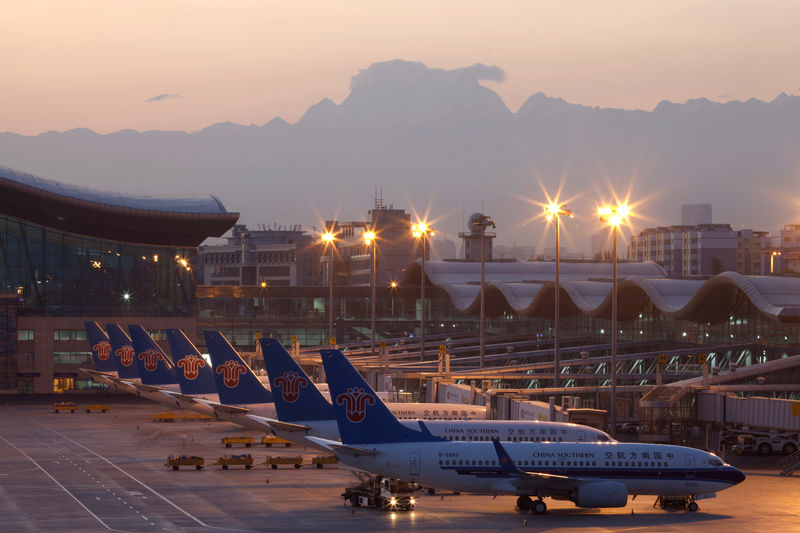 © Reuters. China Southern Airlines planes are seen at the Urumqi Diwopu International Airport, in Xinjiang
© Reuters. China Southern Airlines planes are seen at the Urumqi Diwopu International Airport, in XinjiangBEIJING (Reuters) – China’s state planner on Monday approved a 42.1 billion yuan ($6.06 billion) airport expansion project in Urumqi, capital of the western region of Xinjiang, a key hub in China’s Belt and Road initiative.
Construction will run through 2030 when the expanded airport is expected to handle 63 million passengers and 750,000 tonnes of cargo a year, said the National Development and Reform Commission (NDRC).
The expansion includes construction of two additional runways.
The investment value is over half of what China is spending on Beijing’s new mega-airport project – Daxing International Airport – that costs 80 billion yuan and will serve 72 million passengers a year by 2025.
Xinjiang has seen infrastructure construction spring up across the region in recent years as it is considered by China to be a key node in President Xi Jinping’s Belt and Road initiative.
Xi’s multi-billion-dollar plan aims to bolster a sprawling network of land and sea links with Asian neighbors and beyond.
The Urumqi expansion is aimed at accommodating the rapid aviation growth in Xinjiang and spurring the growth of an international aviation hub in city, according to the NDRC.
China is planning hundreds of airports across the country to serve a market boosted by rising business travel and tourism fueled by a growing middle class.
Many inland airports in cities such as Zhengzhou and Changsha have also expanded to serve inter-continental routes.
Urumqi already serves flights to and from Kazakhstan, Kyrgyzstan, Tajikistan, Uzbekistan, Russia and the United Arab Emirates.
China Southern (NYSE:) Airlines (SS:), which just announced plans to leave the SkyTeam airline alliance, has a hub in Urumqi.
($1 = 6.9439 renminbi)
Fusion Media or anyone involved with Fusion Media will not accept any liability for loss or damage as a result of reliance on the information including data, quotes, charts and buy/sell signals contained within this website. Please be fully informed regarding the risks and costs associated with trading the financial markets, it is one of the riskiest investment forms possible.
Source: Investing.com





























